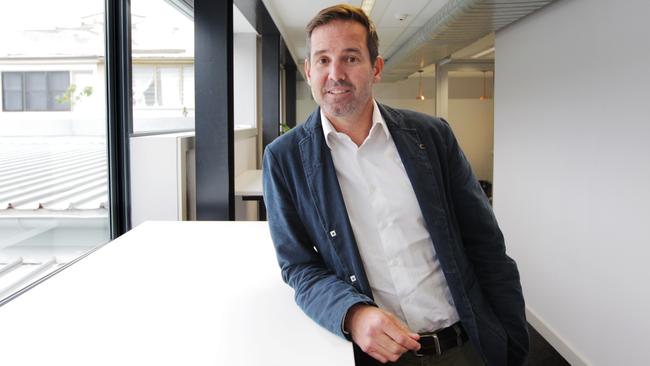Canva ‘on track to be a $150bn company’ but no rush for float, says Craig Blair
One of Canva’s earliest backers says the start-up is growing at record pace, but should hold its horses when it comes to an IPO.

Start-up market darling Canva is on track to be a $150bn company but should be in no rush to float, despite the red-hot tech investment market, venture capital stalwart Craig Blair says.
Canva’s blockbuster funding round last week valued it at $54bn.
Mr Blair is co-founder and partner of Australian venture capital outfit AirTree, which was one of the first VC funds locally to back Canva.
The start-up has since attracted investment from US outfits including T. Rowe Price, Franklin Templeton and Sequoia, and made its co-founders Melanie Perkins, Cliff Obrecht and Cameron Adams billionaires.
AirTree was an investor in the latest funding round alongside other local VC outfits including Blackbird Ventures. Despite Canva being now worth more than Woolworths and Telstra, investors will have to wait to be able to pour money into the company.
“Some founders say ‘I just want to be a publicly listed company’, and many moons ago that was one of the top things. That’s gone now,” Mr Blair said.
“You just want to be an awesome company and have an impact on the world, and many founders now appreciate that you can do that in private markets, with all the proper governance and liquidity and capital you get in public markets, without the downside.
“The disadvantage (of listing) is the short-termism. Even at a $50bn valuation, Canva is making big bets on massive macro trends that are unlikely to be seen in a quarter or two quarters. These are big long-term bets, and that’s a massive advantage (of staying private) if you are competing with someone who has to answer to stakeholders on a three to six month basis.
“Share prices also bounce around, because companies miss one element, and that can be problematic. There’s often a lot of whiplash.”

The investor said it was easy to calculate Canva’s ongoing revenue, cashflows and margins to get to a $50bn valuation, and that if anything the company may be undervalued.
As for what he saw in Canva’s early days, Mr Blair said it was the co-founders’ “unbridled ambition” that immediately caught his eye.
“It was very rare at that stage to see founders who could look you in the eye, and say they could replace Google and Microsoft. That’s audacious at the next level; it’s unheard of,” he said.
“And Melanie had a deep domain experience. She had a clear idea of the problem she was trying to solve. It was clear she knew the problem well, and had a clue to the solution.
“You could see early on that this product was going nuts. Customers were falling in love with it, three and a half million very active customers, no revenue but customers just loved it.
“Canva is now one of the fastest growing companies at its scale, and it’s got high margins.
“It’s got this incredible growth engine, and we can see a path to a $150bn company.”
He added that for any entrepreneur wanting to emulate Canva’s success, a maniacal obsession about the customer and the product was paramount. It was that focus that he also saw in fellow AirTree investment companies Go1 and A Cloud Guru, which recently sold to US giant Pluralsight.
“There’s an authentic link between the Canva culture and the community around that product: they’re basically one and the same,” he said.
In announcing the funding round last week, Canva co-founder Cliff Obrecht said that an IPO wasn’t on the immediate horizon, despite consistent questions from analysts.
“There’s two key reasons or maybe three, why companies IPO. It’s to raise money, and it’s also for liquidity,” Mr Obrecht said.
“We’re able to achieve both of those things in the private markets at the moment. That allows us to focus on the business and that’s how we really deliver value to our shareholders, and what delivers value to the company.
“We want to focus all our time on the business and delivering as much value as we can … There’s no huge rush to go out and list.”






To join the conversation, please log in. Don't have an account? Register
Join the conversation, you are commenting as Logout